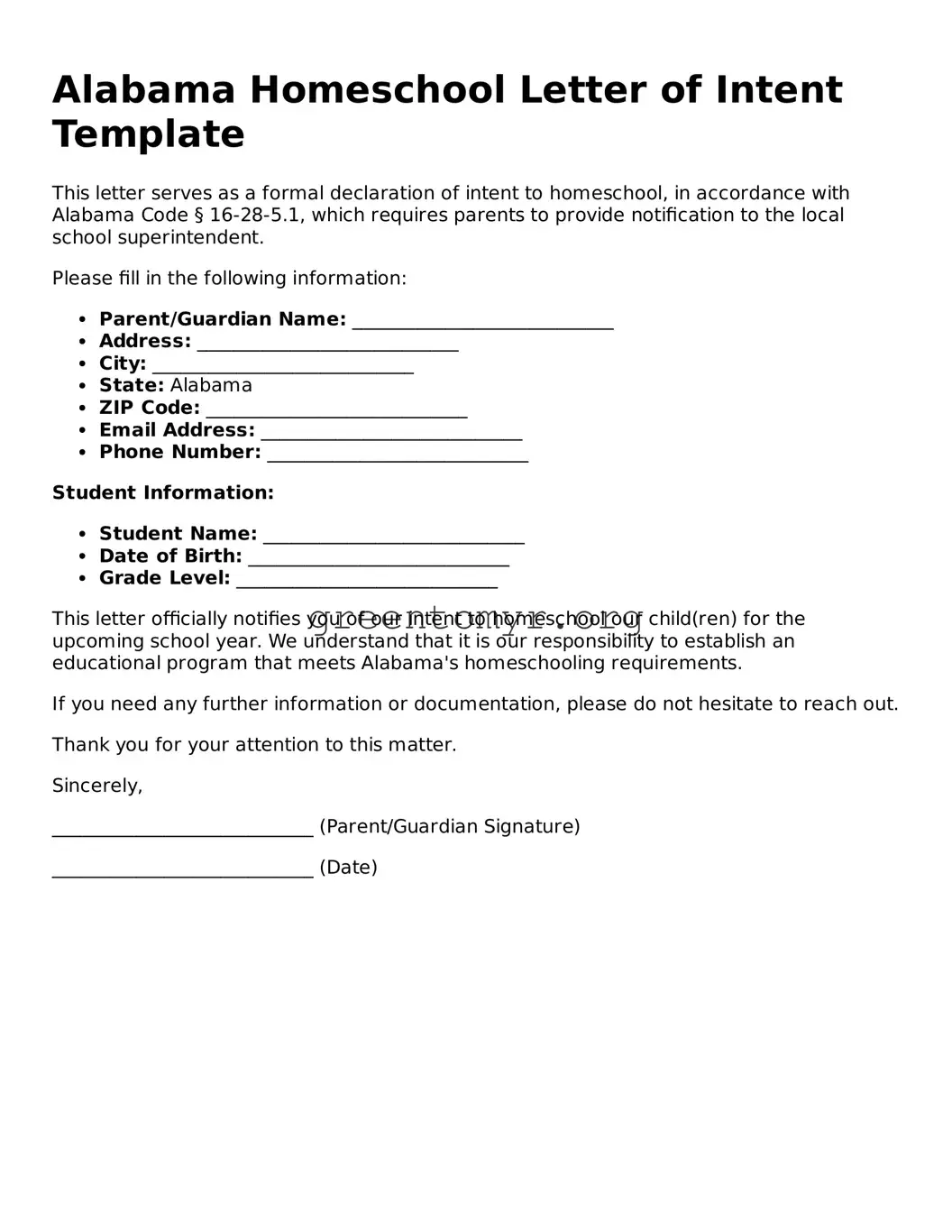Alabama Homeschool Letter of Intent Template
This letter serves as a formal declaration of intent to homeschool, in accordance with Alabama Code § 16-28-5.1, which requires parents to provide notification to the local school superintendent.
Please fill in the following information:
- Parent/Guardian Name: ____________________________
- Address: ____________________________
- City: ____________________________
- State: Alabama
- ZIP Code: ____________________________
- Email Address: ____________________________
- Phone Number: ____________________________
Student Information:
- Student Name: ____________________________
- Date of Birth: ____________________________
- Grade Level: ____________________________
This letter officially notifies you of our intent to homeschool our child(ren) for the upcoming school year. We understand that it is our responsibility to establish an educational program that meets Alabama's homeschooling requirements.
If you need any further information or documentation, please do not hesitate to reach out.
Thank you for your attention to this matter.
Sincerely,
____________________________ (Parent/Guardian Signature)
____________________________ (Date)
